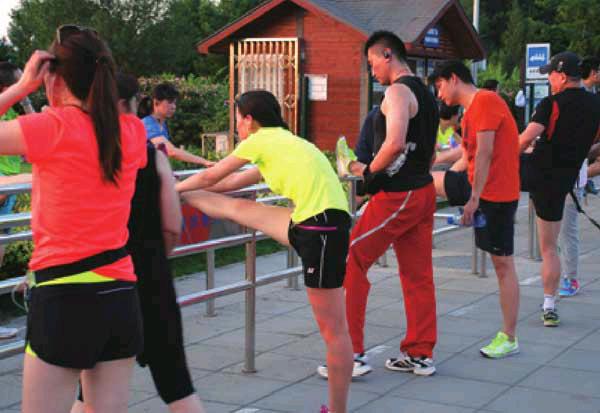Ready, Set, Go
2016-08-17ByDmitriyShoutov
By+Dmitriy+Shoutov
The Chinese peoples passion to run for fun and better health was taken to a new height by the Beijing Olympics. Situated among fascinating architectural structures, Beijings Olympic Forest Park is a special place. The 2008 Beijing Olympics organizers was made a wise decision to turn a huge nature reserve in a northern section of the city into a beautiful park open to all. Even on a very hot and humid day in late June, with temperatures reaching 32 degrees Celsius, this place was packed with Beijingers, all doing what they like most—stretching, running or just relaxing on the green grass.
“Ready, Set, Go.” Momentarily, I found myself surrounded by other 5K-runners during a recent running event. A special synthetic rubberized track made by Italian world-leading manufacturer Mondo felt good under my sneakers. Athletes claim that new technology-tracks give a more consistent and powerful bounce, and I certainly felt it. Around me, I saw all kinds of folk: from professional athletes to slowly walking amateurs taking selfies, singing or playing with kids while following the course. Runners with different talents, speeds and hobbies merged into one peaceful crowd. Nobody complained, and diversity coexisted with harmony.
Taking part in the event was also a joy because the track was designed and built as an integral part of the parks ecological environment. Landscaped by world-class garden designers headed by Hu Jie, an associate professor of urban planning with the prestigious Tsinghua University, the park features peach trees and colorful, aromatic Chinese roses and chrysanthemums, while cypress trees add a touch of thoughtful ornamentation. Everything looked soothing and piaoliang (beautiful)! Trees, bushes and flowers appeared as grateful spectators, easing the runners task by creating a pleasant, multi-layered, multi-herbal atmosphere. The park is justifiably proud of its free aromatherapy, which any beauty salon would eagerly borrow.
At the finish line, I got into a spontaneous conversation with a group of Chinese runners. The sun was fast approaching its zenith, and we were just about to return to the air-conditioned space indoors. Two of the group happened to speak English, so they did most of the talking. I asked about their lives and dreams. One said she had a 7-year-old son, and the most important things in her life were her parents and her child. The other, who had spent some time as a programmer in Houston, the United States, said that her personal dream matched that of everyone else in the country—the attainment of “quality of life.”
Then I posed a question neither of them expected:“What is the American dream?”The younger of the two answered, “Freedom and enjoyment of individualism.”
Beijingers have told me that they run and pay attention to health not particularly to achieve longevity, but rather, to enjoy life to the full while they still can.
Since the dawn of human civilization, people have dreamed about a better life and the means to achieve it. Even before French utopian thinkers, Tao Yuanming, a Chinese poet who lived in the fourth and fifth centuries, described a perfect place in a fable titled The Peach Blossom Spring. In todays world, nobody would seriously search the globe for “the land of happiness.” Hundreds of thousands of people who visit the Olympic Park every day, however, have a solution. A little exertion together with moments of friendship and joy propels them to a stage of true relaxation and inner comfort, bringing each and every ones dream closer to realization.
